The Keyblade Chronicles - Episode Two (Kingdom Hearts Final Mix - Parts 06-09)
By danielkempster 4 Comments
| << Episode One | Navigation Menu | Episode Three >> |
Hey there folks and welcome to another episode of the Keyblade Chronicles, a weekly blog series documenting and deconstructing my attempts to play the entire Kingdom Hearts franchise in a bid to get all caught up in time for Kingdom Hearts III's January 2019 release. If you're new to this series then I'd recommend starting from the very first blog here, and then working your way through the episodes in order - this is going to be confusing enough without trying to pick up the story halfway through. If you're one episode behind then there's a link to the previous episode above, while the introductory blog also hosts an episode list for each game in the series. If you're all up to date and ready to continue the adventures of Sora and company, keep scrolling past the title card:

In today's episode we'll be taking an in-depth look at Kingdom Hearts' opening worlds. We'll be starting off in the original hub-world of Traverse Town, before setting off on our Gummi Ship to the first two Disney-inspired worlds - Wonderland (from Alice in Wonderland), and Olympus Coliseum (from Hercules). Along the way we'll be learning a whole lot more about the tide of darkness spreading across the worlds, the mysterious Keyblade that Sora has acquired, and start to put some of these many disparate pieces together.
When we last left Sora, he had been swallowed up by an enormous ball of darkness, along with his friends Riku and Kairi, and their entire homeworld of Destiny Islands. What awaits him on the other side of the void? Read on to find out...
Part 06 - A Whole New World
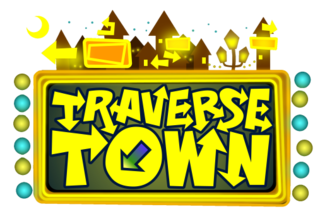
I know what some of you are thinking - shouldn't I have saved this subtitle for when I get to Agrabah? I thought about it, but honestly, I think it's more fitting here. With Sora swallowed in darkness, our perspective shifts back to Donald and Goofy, who have ditched their respective mage and knight outfits in favour of ones slightly closer to their traditional Disney garb (albeit adorned with the requisite Tetsuya Nomura belts and zippers). They're walking through the streets of a town when they look up to witness a star going out, just like King Mickey said they were in his letter. I'm almost positive the assumption to be made here is that the star being extinguished is actually the Destiny Islands, given the timing of events. Unsure which way to go, Goofy's suggestion to follow Pluto is overridden by Donald, delivering one of my favourite lines of the whole game - "Ah, what do you know, you big palooka?". I can't explain why, but something about the way that line is delivered makes me chuckle every time I hear it. The pair of Disney characters set off in a different direction, while it's revealed that had they followed Pluto, they would have run straight into... Sora!
Pluto wakes Sora by pouncing on him before running off and leaving him to explore this strange new town on his own. His first port of call is the nearby Accessory Shop, where he runs into none other than Cid Highwind. As a kid whose introduction to the Japanese RPG genre came in the form of Final Fantasy VII, seeing him rendered in gorgeous 3D blew me away when I played this game for the first time. In a brief conversation in which Sora and Cid both manage to insult each other, Cid reveals that Sora is now in Traverse Town, a refuge for those whose worlds have been lost to darkness. Sora resolves to start looking for Riku and Kairi, and leaves the shop to explore the town further. As he moves from the First District into the Second, he witnesses one of the townspeople collapse and turn into a shadowy creature similar to the ones that attacked his island. Maybe this safe haven isn't so safe after all.
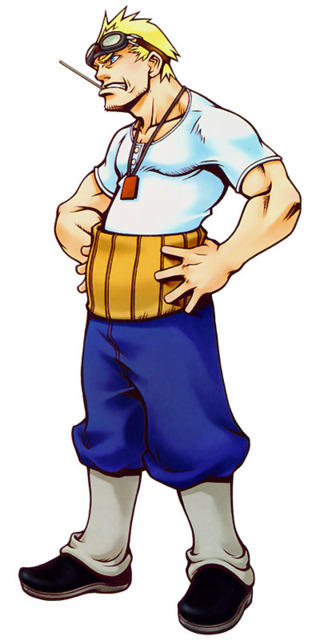
While this is the only scene to trigger that's mandatory for moving the story along, there are some benefits to exploring the Second and Third Districts a little more thoroughly. One of these is that it gets the player used to the pacing of how Kingdom Hearts mixes its exploration and combat - up until now the game has focused on providing either one experience or the other, with combat opportunities being pre-defined and almost all exploration being risk-free. Moving through Traverse Town, on the other hand, attunes players to the mindset that enemies can literally pop out of nowhere to interrupt the flow of exploring. Players also start to intuit things like enemy spawn points and safe zones through this process. Another reason for wanting to get into every nook and cranny of Traverse Town is that doing so will treat you to a number of humorous "near-miss" moments when Sora leaves an area through one door, only for Donald and Goofy to arrive through another. It's a small thing, and quite silly, but I still appreciate it for what it's trying to do. Finally, there's the classic RPG incentive of experience gain - a quick lap of Traverse Town will earn Sora a decent amount of experience and even some Munny (the game's main currency) for his trouble.
After exhausting all open avenues, I head back to Cid at the Accessory Shop. This is a necessary stop to move the story along, although it's not telegraphed especially well by the game. In fact, story telegraphing through level design and character dialogue is one of the most hit-and-miss things about Kingdom Hearts as a whole, as I'll explain further in future parts and episodes. Back outside, Sora is approached by a man wearing black, who warns him that the shadows will keep coming after him as long as he carries the Keyblade, and tries to relieve him of his burden. The camera works hard to deliver some well-choreographed fan-service here, showing parts of the man's outfit like his lion-shaped necklace and the red wings on the back of his black jacket, to tease knowledgeable Final Fantasy fans as to his identity. It's only when Sora refuses to hand over his weapon that the camera pans up far enough to reveal the scarred face of Final Fantasy VIII's protagonist, Squall Leonhart.
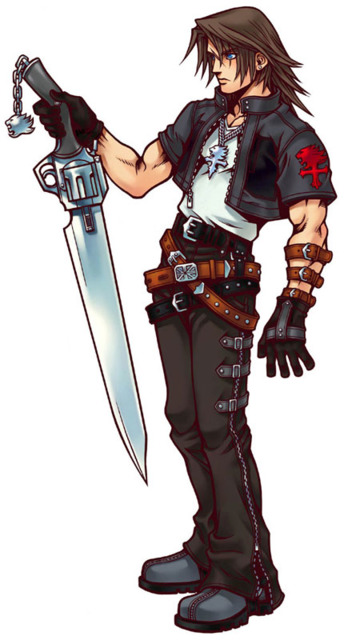
Mini-Boss - Leon - Leon is without a doubt the toughest enemy up to this point. He's fast, he's got a mix of short- and long-range attacks thanks to his gunblade and Fire magic, it's difficult to read when it's safe to attack him, and comparatively, Sora just doesn't have a wide enough moveset to effectively counter him at this early stage in the game. I honestly don't think I ever beat him when playing the original version of Kingdom Hearts on PS2. My saving grace here is Stun Impact, an ability that was added as part of the Final Mix content. Stun Impact carries a 30% chance of finishing any combo with a special attack that inflicts the Stun status on enemies, locking them in place and rendering them unable to attack until either they are attacked again or it wears off. With RNG on my side, I'm able to Stun Leon a number of times, giving me extra windows of time to land additional attacks. As with Darkside previously, losing to Leon in this fight won't result in a Game Over, but you will forgo some experience.
However the fight ends, whether through defeat or exhaustion, Sora wipes out and collapses. We're treated to another Final Fantasy cameo as Yuffie Kisaragi, the cocky ninja from Final Fantasy VII, arrives on the scene. Squall, who's going by the name Leon in this canon, says to her that things are a lot worse than they thought, which is the first inkling the player gets that someone other than King Mickey has been expecting Sora to show up. While our protagonist is in recovery, some more exposition takes place. In the first scene, Donald and Goofy are walking through a deserted part of Traverse Town when someone places a hand on Donald's shoulder and asks if the King sent them. In yet another piece of Final Fantasy fan-service (how my twelve-year-old mind didn't explode from all this excitement, I'll never know), the hand belongs to Aerith Gainsborough, another character from Final Fantasy VII. The second scene, new and exclusive to the Final Mix version, depicts Riku waking up in a strange new world - one which we'll eventually be visiting, although not for some time. He calls for Kairi and Sora and gets no answer, but as the camera pans away from him, it reveals the hem of a dark cloak, belonging to someone looking down at him. The inclusion of this scene feels both unnecessary and jarring, since it retcons an event that didn't really need explaining, and due to the time elapsed between the original game and the English Final Mix version, it features no voice-acting, only subtitles.
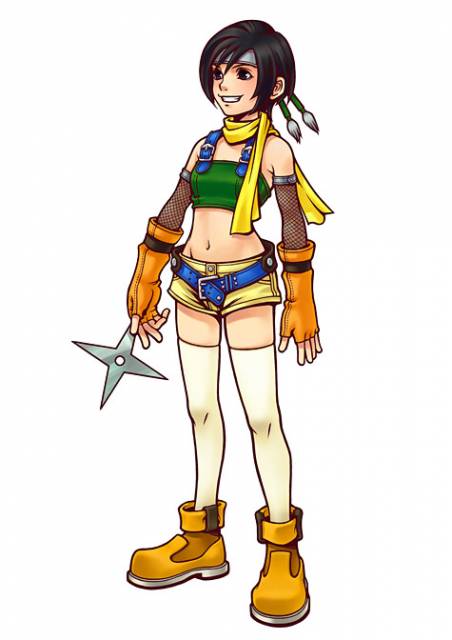
When Sora awakens in a room in the Traverse Town hotel, he's met with what he thinks is a familiar face - Kairi. Unfortunately the excitement is short-lived - he's hallucinating, and the girl standing in front of him is actually Yuffie. What follows is a lengthy story exposition scene that cuts back and forth between Sora, Leon and Yuffie in one room, and Donald, Goofy and Aerith in the room next door. While this plot dump is relatively tame by the standards the franchise has become known for, there's still a lot of ground covered in a short space of time, so I'll do my very best to summarise here. Sora has been chosen by the Keyblade, a weapon with the power to defeat the Heartless. The Heartless, incidentally, are the shadowy figures Sora has been fighting up to now - they're born from, and hunger for, the darkness in people's hearts. The Heartless fear the Keyblade, but desire the heart of its Bearer, which is what's causing them to spawn and attack Sora so relentlessly. We also learn that before coming to Traverse Town, all of these Final Fantasy characters used to live together under the rule of a wise fellow named Ansem. He was researching the Heartless and the powers of darkness, but all of his research was lost and scattered when their world was consumed by darkness several years ago. Donald and Goofy surmise that King Mickey may be looking for Ansem's Report, hoping it will contain information on how to stop the Heartless from destroying all worlds, a view that Aerith shares.
Sora's history lesson is cut short by a Heartless spawning within the hotel room. Leon and Sora send it crashing through the window and follow it down into the street below. Meanwhile, Yuffie escapes through the door into the next room, where Aerith, Donald and Goofy have been chatting. Poor Donald can't get out of the way in time and gets trapped behind the door as Yuffie bursts through, resulting in another humorous visual gag as he's flattened cartoon-style behind the door. Back in control of Sora, I do as Leon says and avoid getting too bogged down battling the minion Heartless. My destination is the Third District, where Sora finally meets up with Donald and Goofy after a spell backfires and causes them to crash down on top of him. I really admire Kingdom Hearts' dedication to these moments of light-hearted visual comedy. The pacing doesn't always land quite as it should, perhaps as a result of the translation process, but the fact the game puts so much heart and effort into trying to amuse the player goes a long way towards winning me over.
Before anyone can introduce themselves, our newly established trio are thrown headlong into an arena-style battle against a wave of Heartless. Alongside the bog-standard Shadow enemies are slightly stronger and more aggressive Soldiers, whose spinning kick attacks catch me unawares a couple of times before I start to read their tells and react accordingly. There's a lot that I could say about having Donald and Goofy joining Sora in combat, and I'm sure over the course of this series I'll get most of it out there, but for now I just want to focus on the basics. For a start, their presence helps because it gives enemies other targets to focus on, reducing enemy attention on Sora and giving the player a bit more time to think and plan ahead in fights. They're also pretty reliable in terms of doing chip-damage to enemies in the process. Sadly, that's about as far as the positives go at this stage. They're terrible resource guzzlers, using their held items far too liberally even on the lowest manual setting. The last two times I played the game in 2015, I would only give them items to hold immediately before boss battles, because I found that doing otherwise was draining my stock of Potions and Ethers far too quickly, and I suspect this playthrough will be no different. They also have very little sense of self-preservation - while they can and do heal themselves with items and spells, they lack the AI required to distance themselves from danger when it's overwhelming them. Donald and Goofy certainly have their uses, and I'll get to those later on at the appropriate time, but right now, that's all I can say about them.
No sooner do the trio dispatch this wave of smaller enemies than their leader chooses to reveal his disembodied floating head. With a series of metallic clangs as its parts fall from the sky, Sora, Donald and Goofy come face to face with:
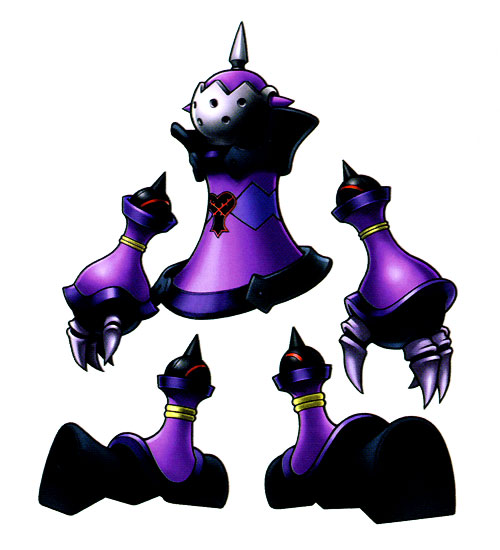
BOSS - Guard Armor - Guard Armor is definitely a step up from Darkside. His limbless body is comprised of five distinct targets - two hands, two feet, and a head and torso which share an HP pool (the extremities all have their own health bars). Each body part moves independently, has its own attack patterns, and can detach from the core unit to zero in on its chosen target. This means the player has to try and keep track of what each part is doing at all times, look for tells and evade accordingly, attacking only when it's safe to do so. My tried and tested strategy involves clearing the hands first - given these have the least HP, they're the quickest targets to eliminate, and the less targets on the field means the less individual components there are to try and attack Sora and crew. The hands can spin and also drive down into the ground, but these attacks can be parried with a well-timed attack, inflicting Stun and buying some valuable time to wail on the downed appendage. Once the hands are gone, it becomes easier to focus on the feet. These also have two distinct attacks - a forward march which can be parried, and a shockwave-emitting stomp that must be dodged. Each time a hand or foot is defeated, it will drop HP balls, giving the player an opportunity to heal up before attacking the next body part. When only the torso and head are left, they will begin using a deadly tornado-style spin attack - again, this can be parried with a well-timed attack. When the torso's HP reserves are depleted, the battle is over.
With Guard Armor defeated, Sora, Donald and Goofy finally introduce themselves to each other. Donald and Goofy explain that they're on an interstellar mission to find the Key Bearer on the instructions of their King. They invite Sora to join them on their journey, travelling to different worlds to try and pick up the King's trail. While Sora initially seems reluctant, some gentle encouragement from Leon - reminding him that getting out there is the best way to try and find his missing friends - convinces him to go along. It's here that one of Kingdom Hearts' most memorable scenes plays out - the "happy faces" scene. "You can't come along looking like that, understand?" Donald says to Sora. "No frowning, no sad face. This boat runs on happy faces!" And what's Sora's response to this? Well:

This is one of the few situations where I think I like something in Kingdom Hearts more now than I did as a kid. Back when I was twelve I just thought this scene was stupid and out of place, something that got drastically lost in translation from the original Japanese script. Now, with over fifteen years of distance from that first playthrough, I actually think it's one of my favourite moments in the game. Sora's lack of inhibition in this moment goes a long way towards breaking the ice between the three characters. It also serves to distinguish him from the stereotypical brooding, moody protagonists that had come to define the Japanese RPG genre at the time of its release, and to establish Kingdom Hearts as a game where, just like Square-Enix and Disney, the serious and light-hearted can co-exist.
Sora still looks dumb, though. No getting around that.
With our trinity formed, the action shifts perspectives once more, this time to a round table in a very dark room which, for the purposes of avoiding story spoilers, I'm just going to call 'Villain HQ' for now. As ominous music plays, a number of characters with familiar, sinister voices are gathered round the table discussing Sora and his Keyblade. Some seem quite concerned by his meddling, while others question what threat a young boy could pose. Their bickering is halted by a black-cloaked female figure who through a camera pan is revealed to be Maleficent, the antagonist from Sleeping Beauty and apparent leader of this troupe of ne'er-do-wells. She poses the question - will he conquer the darkness, or be swallowed by it? Time will tell, I suppose.

With Sora in tow, Donald and Goofy say their goodbyes and prepare to board their ship. As a going away present, the Final Fantasy characters gift our newly-formed party with a handful of Munny to spend on items, weapons and accessories in Traverse Town's shops. As a welcome present, Donald teaches Sora his first magic spell - Fire, a modest offensive spell allowing him to shoot a ball of flame from the tip of his Keyblade. Fire has decent range, homing properties and deals reasonable damage at this early stage in the game, making for a good introduction to Kingdom Hearts' magic system. The default magic menu can be quite cumbersome to navigate as it requires the player to use the D-pad instead of the left analog stick, stopping Sora from moving and making him a sitting duck while spells and targets are selected. Thankfully, there's a customisable shortcut menu implemented, allowing the player to rattle off a quick spell with the touch of a face button while holding down L1.
Goofy's welcome present for Sora is the Dodge Roll ability. Kingdom Hearts' ability system is one of the most important components of its gameplay, since it allows the player to customise Sora's combat loadout to fit their playing style. There are many different kinds of abilities in Kingdom Hearts, from active combat abilities that trigger special attacks, to passive abilities that affect what spoils enemies drop after a battle, and everything between. These abilities need to be equipped in order to be used or activated, but there's a limit to what can be equipped. Each ability has a corresponding point value from 1 to 5, indicating how many ability points (or AP) it will cost to equip, and a character can't equip more abilities than their current total AP will allow. More AP can be earned by levelling up, equipping certain accessories, or using certain items. Dodge Roll, as its name suggests, maps an evasive roll manoeuvre to the Square button - a welcome addition to Sora's battle repertoire, and a steal with an equip cost of only 1AP. I equip it immediately, knowing that I'll be making liberal use of it in the worlds to come.
Before we hop onto the Gummi Ship, there are a few more things I want to do in Traverse Town before leaving. The first is to use the Munny I've accrued to pick up some slightly better weapons for Donald and Goofy. Given I'm planning to keep them in line with their combat roles of mage and defender respectively, I decide to opt for the magic-boosting Morning Star for Donald, and the larger Stout Shield for Goofy. One thing that bears mentioning here is that the shop prices have been drastically increased in the Final Mix version of the game, with these weapons costing almost double what they did in the original PS2 release. I assume this was done for balance reasons, but it's still pretty frustrating for my Munny not to go as far as it used to. That's inflation for you, I guess.
Also worth mentioning here are Trinity marks. These are coloured symbols resembling three hearts linked by a circle, and can be triggered when Sora, Donald and Goofy are all together. Each colour corresponds to a different ability, with more being unlocked as the game progresses. Right now we can only activate blue Trinity marks, corresponding to the Trinity Jump ability, but it's worth doing to access some extra items and Munny before moving on. Finally, I feel obliged to mention the 99 Puppies side quest. Anyone who's seen 101 Dalmatians will be familiar with Pongo and Perdita, whose family have made it into Kingdom Hearts as glorified collectibles. The story justification for this is that their ninety-nine puppies were lost and scattered across the worlds when their own world was consumed by darkness. Since Sora, Donald and Goofy are world-hopping anyway, Pongo and Perdy request that they return any puppies they find on their travels, back to their new home in Traverse Town's Second District.
This section has already gone on a lot longer than I anticipated, so let's move on from Traverse Town to pastures new. The team finally leave through the big town gates, and out into the unknown...
Part 07 - Gummis for Dummies
The unknown, as it turns out, is Kingdom Hearts' World Select menu, a screen showing the game's various worlds and the routes that connect them. Or at least, it will once it's been fleshed out. Right now it depicts two worlds - our current location of Traverse Town, and the unreachable Disney Castle - and two branching paths leading to unknown destinations. Helpfully, the game assigns each world a 'battle level' - a star rating out of ten, indicating its combat difficulty. This is visible even if the world isn't, so while there's a degree of flexibility to the order in which you approach worlds, there's also a helping hand built into the game to tell you where to go next if you're not sure or can't decide. A smart decision for a game that can, at times, be very obtuse about directing the player. For the purposes of this blog series, I'll be tackling worlds in the order recommended by their battle level.
There are a couple of things that are worth noting here, even though I can't really dive too deeply into them until later in the series. The first is the Gummi Garage, a separate menu interface where you can build Gummi Ships, either using pre-designed blueprints or from scratch in the Gummi block editor. Since we only have one blueprint and hardly any Gummi blocks, I'll come back to explain this one in more detail later. For now, just know that it's there. I also quickly take this opportunity to customise my Gummi Ship controls so the main cannons are on the L1 button, because as anyone who's ever played Cuphead will tell you, firing should never be on a face button.
Also worth mentioning are the Gummi Ship missions. These weren't present in the original release of Kingdom Hearts, but were added later in the Final Mix version of the game, I believe as a response to journalistic criticism. They give the player scores to beat and tasks to accomplish while flying between worlds, adding an extra layer of depth and purpose to what is, as I'll eventually explain, a pretty mundane portion of the overall gameplay. Each world has three missions associated with it, with later missions unlocking once earlier ones have been completed and the requisite flight paths have been opened and travelled at least once. As with the Gummi Garage, it's not something we can engage with right now, but I think it's worth acknowledging at least.
Out of the two available paths, I select the one leading to the world with a battle level of one star, and set off. These flight sections between worlds play like Star Fox (or at least, how I imagine Star Fox plays as someone who's never played it themselves but has seen plenty of gameplay footage over the years). It's a semi-on-rails shooting sequence where your ship travels constantly forwards, while you have the freedom to move around the screen in two dimensions to avoid obstacles and enemy attacks, and launching your own attacks using on-board weapons like cannons and lasers.
Although it's light on extra features, the default 'Kingdom' Gummi Ship is a pretty good ship for getting to grips with the controls and mechanics of these flight sections. It's light and manoeuvres round the screen reasonably well, and it also has a cannon for taking down any enemy ships, which are apparently piloted by Heartless - a fact that poses some conundrums I may bring up later, if I can recall it when it becomes relevant. Damn it, there's a lot of stuff I need to try and remember to revisit later on. Destroying these ships leaves behind goodies to pick up - usually Gummi blocks, sometimes blueprints, all of which get added to your Gummi Garage for future use.
One criticism I will level at the Gummi Ship sequences, even at this early stage, is the fact that you have to move the Gummi Ship to move the weapon crosshair. This means that trying to line up shots on enemies or obstacles will move your ship, potentially into the path of other oncoming hazards. While it's not a deal-breaker on this route, I can already foresee the problems it's going to cause me down the line, both on busier routes and should I attempt any of those aforementioned missions. Independent control of both the Ship and crosshair using an industry-standard two-stick control system would have worked much better. Some might say I should give the game a pass considering its release predates a lot of modern control standards, but it's hard to feel that way knowing that they made quality-of-life improvements to other aspects of the game's controls without addressing this one.
The path to the first world is pretty unremarkable, not really a surprise given it's the first time a player will have piloted a Gummi Ship. None of the enemy ships have weapons attached, so there aren't any projectiles to dodge, and most of the obstacles can easily be avoided or destroyed with some well-placed cannon fire. After a couple of minutes of relatively uneventful travel, Sora, Donald and Goofy arrive on the edge of a brand new world and prepare to disembark.
Part 08 - When Wonder Ain't So Wonderful

If you weren't able to work it out from the title of this section, our first port of call in our search for Riku, Kairi and King Mickey is Wonderland, the nonsense realm from Disney's 1951 animated classic, Alice in Wonderland. While that film took great liberties with its source material, Kingdom Hearts' fidelity to the Disney interpretation is impressive, at least initially. It begins almost exactly as the film does, with Sora, Donald and Goofy falling down the Rabbit Hole into Wonderland. Not wanting to miss a prime opportunity for slapstick comedy, we see Sora and Donald land gently on their feet, before Goofy is dropped from a few feet onto his stomach. Meanwhile, a White Rabbit runs by, prompting the team to give chase.
I must say that in preparation for this blog, I rewatched the Disney films that these worlds are taken from, and in the case of Wonderland, I was pleasantly surprised by how faithful this opening environment is to its cinematic counterpart. The colours and surreal proportions of the rabbit hole and the objects within it go a long way towards making me feel like I've genuinely stepped into the world of the film. They even have the multiple doors in ever-decreasing sizes that lead into the next room. Unfortunately the same can't be said of the Bizarre Room itself. While the film's iconic Doorknob character is present, along with the table and the bottles on it marked 'Drink Me', the rest of the room is filled with furnishings - a far cry from its near-empty state in the film. It almost feels like at one stage the developers might have had two separate scenes planned - one in the Bizarre Room, and one in the White Rabbit's house - but decided to cut the latter and move some of its contents into the former. That's purely speculation on my part, though.

To progress from here, I need to solve a... Well, I've written the word 'puzzle' in my notes, but that seems generous in retrospect. Since the Doorknob goes to sleep and won't grant Sora passage, I need to push a bed into the wall while fully sized, revealing a small exit that I can get through after using the bottle to shrink down to size. Simple I know, but I promise things get a little more involved down the line. From here, their next destination is the Queen of Hearts' Castle. While those words might summon up images of grandeur, the reality is quite disappointing - a single square room, with distant landscapes painted on the surface of each wall to try and give the illusion of open space. Which would be fine, were it not for the fact you can run directly up to these walls and shatter the already-cracked facade the game is putting on. Honestly, I know it's still early days, but I think the Queen's Castle might be my most disappointing zone from any world in the whole game.
Sora, Donald and Goofy arrive to find the Queen of Hearts presiding over a trial, in which a young girl named Alice is accused of trying to steal her heart. Donald and Goofy remind Sora that it's not appropriate to meddle in the affairs of other worlds, but that doesn't stop Sora's friendly side getting the better of him, and he rushes in to help. Naturally the Queen doesn't take too kindly to this interruption and places Alice in custody, demanding that the trio bring her evidence of Alice's innocence before she will set her free. That means - yep, you guessed it - another fetch quest! It seems like this game just can't get enough of them in its first few hours.
Our next destination is the Lotus Forest, a natural environment that takes most of its visual cues from the scenes in the film involving the Caterpillar, although he's sadly nowhere to be seen. Instead we're greeted by the Cheshire Cat, who speaks to us in poorly-written riddles that suggest there are four pieces of evidence to be found in Wonderland - Footprints, Antenna, Stench, and Claw Marks. Two of these are here in the Lotus Forest, while the other two are back in the Bizarre Room, although they must be reached by using specific exits from the Lotus Forest to access previously unreachable areas. You only need to find one box to take back to the Queen to trigger the next story beat, but finding all four comes with its own reward - early access to the Blizzard spell. Another piece of offensive magic, Blizzard emits from the Keyblade in a wave rather than a single projectile, giving it a wider spread but shorter range than Fire. It's particularly useful in close quarters against groups of enemies, and is very effective against the new enemy types in Wonderland - taking out the Fire-casting Red Nocturnes using Blizzard will earn Sora extra 'tech' experience points.

With all four pieces of evidence in hand, I return to the Queen to present them. Not particularly satisfied with the results of my treasure hunt, she presents a box of her own evidence and shuffles them all before asking Sora to pick a box at random, upon which she will base her judgement. Your chances of success here will depend directly on how many pieces of evidence you collected, but even at best, there's a twenty percent chance of picking the wrong box. Doing so will incriminate Donald and Goofy, while picking one of your own pieces of evidence will make the Heartless the prime suspects. Either way, the end result is the same - the Queen will lose her temper, hoist Alice out of reach, and set her card guards on you.
Mini-Boss - Guard Tower - This fight can start in one of two ways. If you presented evidence suggesting the Heartless were to blame, you'll have Donald and Goofy by your side. However, if you pick the Queen's evidence and implicate your buddies in the crime, they'll be detained in makeshift cages and Sora will be on his own. This is easily remedied - just attack their cages to release them and they'll join you in combat. The target here isn't actually an enemy but a stationary guard tower used by the guards to hoist Alice's cage off the ground. That's not to say there aren't enemies to deal with, mind - the Queen's card guards are on the offensive, and will try to stop you from taking down the tower with attacks of their own. This is where it pays to have Donald and Goofy along for the ride, since they can draw the attention of the card guards and leave Sora relatively unimpeded as he slaps the tower with his Keyblade. Should your buddies faint and the guards turn their attention to you, Blizzard can be useful (if you've unlocked it) for its crowd control properties. Like the Guard Armor, destroying parts of the tower will release HP orbs, providing a mid-battle healing opportunity. Make the most of this, as it won't be long before the game stops being this generous.
Once the tower is fully destroyed, the battle is over. Alice's cage returns to the ground and swings open to reveal - nothing! It appears Alice was kidnapped by someone (or something) while everyone was busy duking it out. The Queen, apparently quick to forgive, tasks Sora, Donald and Goofy with finding her - there can be no trial without a defendant, after all. Heading back to the Lotus Forest, the Cheshire Cat appears once again to riddle us towards our next destination - in order to reveal the shadows, we need to "light the lamps in the upside-down room". It's here that the Bizarre Room starts truly living up to its name, as entering it from different angles will cause the perspective to shift, allowing Sora to walk on the walls and even the ceiling. It's this last option we need, accessible through a newly-opened exit in the Lotus Forest that leads through the Tea Party Garden. This is another of my big disappointments within this world - the fact that the film's iconic tea party scene, bursting with creative potential for the developers to exploit, is reduced to nothing more than a cameo environmental appearance.
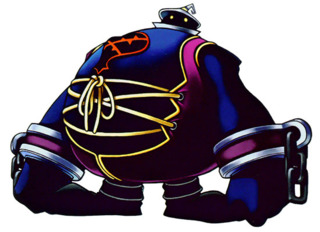
Once on the ceiling of the Bizarre Room, we can light the lamps as per the Cheshire Cat's instruction. These lights are guarded by several Heartless including a new type called Large Bodies. These huge round Heartless introduce another element of strategy to combat since they can't be damaged from the front by physical attacks - Sora must either employ magic, or get around behind them to hit their exposed backs. Very few regular enemies demand this level of planning and strategy in Kingdom Hearts, so I commend the Large Bodies and their kin (who we'll meet in future episodes) for mixing things up a bit. Once the enemies are wiped out, Sora can light the lamps with a tap of the Triangle button. It's slightly disappointing for the game not to make use of the Fire spell here, but I can understand why - making them magically flammable could cause them to be lit during combat, which I guess could cause scripting issues for the next cutscene.
With the lamps lit, the Cheshire Cat tells Sora that the enemies will appear here, but also in another place - a not-so-subtle hint to return to the Bizarre Room with a different orientation. Specifically, we're looking to re-enter the right way up. A quick bit of backtracking is all that's required here, and when Sora joins the Cheshire Cat on the big glass table, Alice's kidnapper finally reveals itself.
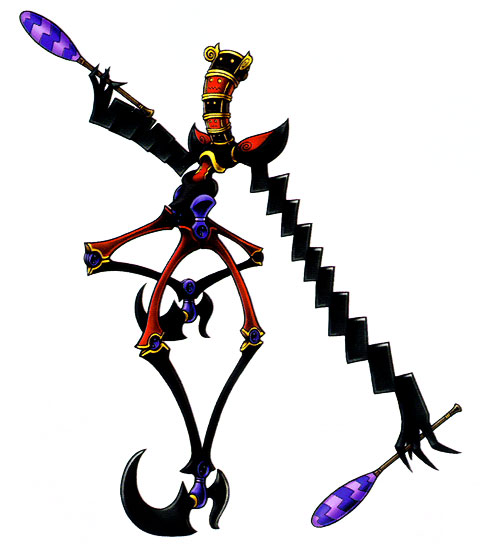
BOSS - Trickmaster - The Trickmaster is another step up in the boss fight department. Unlike previous bosses, it only has one strikeable target, that being its weird, multi-faced head. Given the enemy's stature, this target is out of reach of Sora's regular attacks, forcing the player to use the chair and table in the middle of the Bizarre Room to gain some height and ensure their attacks find their mark. Landing a few hits on the head in this way will cause the Trickmaster to slump, bringing its weak point within range of ground-based attacks for a short time and releasing a smattering of health-restoring HP balls in the process.
If this sounds more straightforward than the fight with Guard Armor, it's because I haven't talked about Trickmaster's skill-set yet. It carries a pair of batons which it can twirl and swing to prevent you from reaching its weak point by knocking you out of the air. These batons are also flammable, making it inadvisable to use Fire magic against Trickmaster (although successfully casting Blizzard on a lit baton will put it out and earn you some 'tech' experience). It can also sing to make the table spin, making it even more difficult to line up a jump towards its weak point, and can even slam the table and chair down into the ground for a time, temporarily removing your only way to meet it on its own level.
When Trickmaster's health drops below a certain point it will change tactics, heading over to the corner of the Bizarre Room and using the stove to light its batons. It will now use its lit batons to shoot homing fire balls at Sora, which are incredibly fast and difficult to evade even with Dodge Roll. I found the best tactic at this point was to put the table and chair between Sora and the Trickmaster, causing its attacks to fizzle out when they hit the glass, then leap up onto the table and resume my aerial attack strategy once the barrage of fireballs had ceased. Eventually the Trickmaster's HP bar will deplete and earn you the victory. Additionally, if you didn't earn it while collecting evidence before, defeating the Trickmaster will reward you with the Blizzard spell. It's certainly more a battle of attrition than anything else up to now, and I appreciate its attempts to introduce more verticality into the game's combat system. All in all, it's a solid boss fight.
The ruckus from the fight causes the Doorknob to wake up. He yawns, revealing a mysterious Keyhole deep within his own lock-shaped mouth. Sora's Keyblade reacts with this Keyhole, emitting a beam of light that seals it and releases a strangely-shaped Gummi block. As with a great many other things, the significance of this action won't be revealed until a little later on, so for now I'll just ask you to pop it in your memory bank, alongside all the other things that aren't relevant just yet, but will be soon. Unfortunately, although they beat the Trickmaster, they're too late to save Alice - the Cheshire Cat tells them that she's been taken away by the shadows into darkness. Sora is disappointed, but Donald remains optimistic that they'll find Alice on one of the other worlds they travel to. While the game glosses over this pretty quickly, I feel like it's worth pointing out that Sora's first grand mission to another world is actually a pretty consummate failure. For all his bravado, he is unable to clear Alice's name in the eyes of the Queen of Hearts, and is then unable to save her when she's kidnapped by the Heartless. All of this feeds into a narrative that Kingdom Hearts has been weaving since its opening - Sora is not a natural hero. He's a kid with a huge burden placed unexpectedly on his shoulders, and he's doing the best he can with what little experience he's got. Since, once again, this is something that's going to link up with future story events, I'll try to remember to tie up this thread when we reach the other end of it.
With nothing left to do in Wonderland right now, Sora, Donald and Goofy return to their Gummi Ship and set off in search of other worlds.
WONDERLAND Thoughts - Given I've prepped for this series by re-watching the Disney films that these worlds are based on, I felt it might be worth adding some final thoughts about each world as I play it, and how successful I think Kingdom Hearts is at replicating the experience of the film. In Wonderland's case, I've always thought it was very out-of-place compared with other worlds in the Kingdom Hearts universe. It's a weird choice as the first world since its nonsensical inspiration lends itself to mechanics that never appear again in any other part of the game - namely the puzzles around size manipulation and reorientation of the Bizarre Room. Introduced later in the game these might be better received for what they are - world-inspired gimmicks. But to put them in the very first world that our heroes travel to creates a certain sense of expectation within the player that the rest of the game then doesn't meet. I don't think it's intentionally misleading, but that doesn't make it forgivable.
Aesthetically I think the world does a great job of creating a sense of place, although I'm left feeling a little bit disappointed that it didn't try to do more. Rewatching Alice in Wonderland, I was struck by how the film is composed of a number of episodic vignettes rather than a continuous narrative. Alice visits a wide variety of places on her trip through Wonderland, and it's a shame that we don't get to see a wider variety of them re-created in 3D. I feel the same about the characters chosen to feature within the world, too. When the film's cast features such iconic characters as the Mad Hatter, the March Hare, Tweedles Dee and Dum and the Caterpillar, it feels like wasted potential to then only meet the White Rabbit, the Doorknob, the Queen of Hearts and the Cheshire Cat. Of course, I realise I'm being vastly unfair to the game here - since Wonderland is itself merely a single episode in the wider context of Kingdom Hearts, it makes sense for the developers to pick one of those vignettes from the film and develop the world around that, rather than trying to cram in everything but the kitchen sink. I just feel like some of those iconic characters would have made very welcome additions to the world's cast.
One area I'm less willing to concede ground to the developers is in the design of the Heartless for this world. Wonderland is full of weird and wondrous creatures, perhaps best driven home by the film's Tulgey Wood scene - the glasses on legs, the mirror-faced and shovel-beaked birds, the horn-like ducks, and who could forget the dog with brushes for its face and tail that sweeps away the path beneath Alice's feet? All of these could have made exciting and interesting base designs from which to build some world-specific Heartless. Instead we get a batch of generic humanoids - Shadows, Soldiers and Large Bodies - and the mage-inspired Red Nocturnes. In defence of the game, however, I do like the Trickmaster's chaotic design and feel that it's a good fit for this world.
Part 09 - We Could Be Heroes

Our next destination is the unknown world with a battle level of two stars, situated on the other side of Traverse Town. That means I have to fly my Gummi Ship back to Traverse Town, completing the previous flight route in reverse before setting out in the opposite direction. It's pretty similar to the route to Wonderland, as none of the enemy ships have weapons. There are significantly more obstacles on this route, however, including a few walls of Gummi blocks which must be shot in order to pass through. Successfully reaching the end of this route puts Sora, Donald and Goofy in front of their next destination - Olympus Coliseum.
Immediately upon arrival, the aesthetics of Olympus Coliseum do a great job of transporting you to the world of Disney's Hercules. The light colours, the juxtaposition of swirls and straight lines in the architecture, and that sweeping score with its blaring horns, evoking shades of the movie's theme, Go the Distance. It's the perfect introduction to this new world and sets an appropriate tone for the story we're about to experience. Passing through the Coliseum doors into the lobby, the team meet Philoctetes for the first time. While the game's budget clearly didn't extend to hiring Danny DeVito, stand-in Robert Costanzo (who voiced the character in the TV series and straight-to-DVD prequel) does a fine job of aping his style, even if his New York drawl does go on a little too long as he declares he's "preparin' for the gaaammeesss".
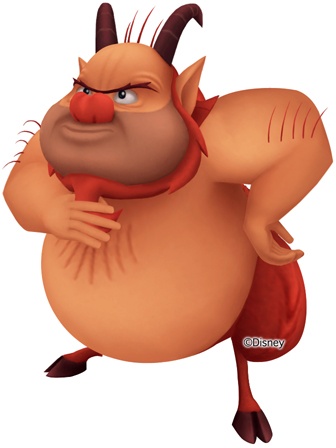
I realise I haven't spoken about Kingdom Hearts' voice acting before now, despite there having been quite a lot of it so far. I guess the reason for that is that for the most part, it's serviceable, but unremarkable. The original characters have appropriate child-actor voices - Sora is voiced by Haley Joel Osment (The Sixth Sense and A.I.: Artificial Intelligence), Kairi by Hayden Panettiere (Heroes and Nashville), and Riku by David Gallagher (whose credits are less impressive, but include 2007's The Picture of Dorian Gray). With the exception of one notable character, all the Final Fantasy VII characters with spoken dialogue are voiced by the actors who would go on to portray them in the Advent Children movie. On investigation, several big-name actors actually reprised their roles for the Disney characters in this game. Although we haven't yet encountered him, Hades carries the unmistakable charismatic fast-talk of James Woods. Perhaps even more shockingly, Alice was voiced by the same Kathryn Beaumont who provided her voice in the original movie, some fifty years apart. It's therefore all the more surprising that given the level of talent involved, so many of the Disney characters' lines sound so throwaway. I'm not sure what specifically is at fault here, whether it's sub-par voice direction, or a lack of recording time, but a lot of the lines sound like first takes that were deemed "good enough". In light of the talent involved, these serviceable performances actually end up feeling a little disappointing.
Sora is keen to enter the games but Phil's not having any of it. Instead he sets Sora a couple of time-trial barrel-busting challenges to prove himself. These two challenges are unlike anything else in the game up to this point, combining combat mechanics with physics-based puzzle-solving as you try to launch stacks of barrels into other stacks of barrels to chain your destruction and shave valuable seconds off your time. It's not exactly difficult, but the process of working things out is rewarding enough, especially on the tougher second course. Unless you're like me and use the Ripple Drive ability to destroy the stacks of barrels in no time at all, removing the strategic element altogether. Phil is impressed by Sora's performance, but still doesn't think he's "hero enough" to compete in the gaaammeesss. While he's not prepared to hand over an Entry Pass, he does teach Sora how to use the Thunder spell. Like Fire and Blizzard, this is an offensive spell, but instead of being emitted from the tip of the Keyblade, it originates above an enemy before striking down on them and their surrounding area. It's useful for dealing with groups of enemies at range, and because Sora doesn't need to be facing a locked-on target to use it, it's very useful when trying to move away from enemies and keep them at a distance. However, it consumes more MP than Fire or Blizzard, and doesn't seem to do as much damage.
While trying to leave Olympus Coliseum, Sora and friends are intercepted by a new character - the lord of the Underworld, Hades. It just so happens he's carrying a spare Entry Pass for the games, and wants Sora to take it. There's definitely more going on here than meets the eye, but Sora's oblivious to this and happy purely to have a route into the Coliseum. He runs back to Phil and presents him with the pass, who reluctantly grants him access to participate.
What follows are a sequence of battles pitting Sora, Donald and Goofy against groups of Heartless, restricted to a featureless square arena. Defeating each group of Heartless earns passage to the next round of the tournament, and every other round is punctuated by a story-progressing cutscene. There's nothing remarkable about the fights themselves - they're all against familiar enemies with the exception of the new Blue Rhapsody, another mage-type Heartless who uses Blizzard magic. After two rounds, Phil calls the guys over for a pep talk. He tells them that if they keep it up, they might end up fighting against a real hero, like his own protegé, Hercules. It's here that one of the most iconic moments from my childhood playthroughs of this game unfolds. A caped figure walks past Sora, catching his eye. The camera pans up (this game sure likes its pan-up reveals, huh?) to reveal the familiar armour, face and hair of Final Fantasy VII's Cloud Strife. For anyone who might not be able to comprehend the significance of this moment, let me remind you that Kingdom Hearts predates Final Fantasy VII: Advent Children by almost three years. This was the first time I'd seen the protagonist of my then-favourite video game rendered in such detailed 3D. This was a big deal.
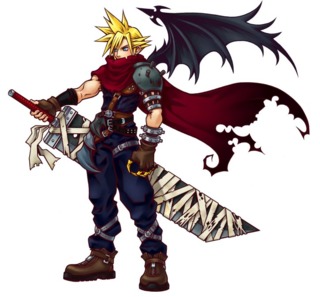
A couple of fights later, the motivation for Hades offering Sora a pass for the games becomes clear. We see him standing underneath the bleachers with Cloud, discussing the fact that the swordsman is likely to end up fighting against the Key Bearer in an upcoming round. Cloud isn't keen, remarking that the deal he struck with Hades was just to kill Hercules, and not some kid. Trying not to lose his cool, Hades explains that Sora is just collateral - a stepping stone on the way to fighting Herc - but Cloud walks away unconvinced. Still, it seems like Hades has a contingency plan in place, if the growling coming from beneath the bleachers is any indication.
Sure enough, it's not long before Sora is staring down Cloud in the arena. This fight bears a lot of similarities to the one against Leon in Traverse Town - a single sword-wielding opponent who outclasses Sora in terms of combat ability, but who can be overcome with the right strategy. It's a tough fight, requiring the player to listen out for Cloud's spoken tells in order to get out of the way of his incredibly fast charge attacks. His quick recovery also means that getting greedy and trying to steal too many hits will result in Sora getting acquainted with the business end of the Buster Sword. There are openings, though, and exploiting them with well-timed combos will bring a slow but assured victory. In another parallel to the Leon fight, you don't have to win this battle to move the story forward, but losing will forfeit any experience gain.
Whether Cloud is defeated or wins and refuses to finish Sora off, the end result is the same - Hades counters his disobedience by releasing his three-headed dog Cerberus into the arena. Hercules arrives just in time to hold the beast back, giving Sora, Donald, Goofy and Phil a window to escape. Back in the Coliseum lobby, Phil expresses some concern that Herc might not be able to hold Cerberus off for very long. Sounds like a job for a hero! After a brief moment to recharge at the save point and restock Sora's inventory with healing items, I charge back into the arena to give Hercules and Cloud a hand against the guardian of the Underworld. Unfortunately the hero doesn't feel like hanging around. He grabs Cloud and flees the arena, leaving our three heroes to face the monster alone.
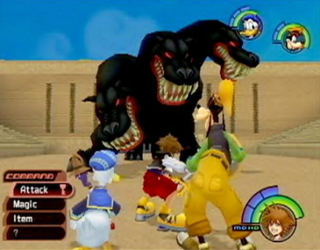
BOSS - Cerberus - Cerberus is easily the toughest challenge that Sora, Donald and Goofy have faced up to this point. His three heads are all targets with a shared HP pool, but they are seldom within reach of Sora's Keyblade and all three attack in relentless waves. They breathe homing balls of fiery energy which can be deflected for 'tech' experience, however this is difficult without the Guard ability equipped. After this Cerberus changes stance, bringing its heads lower to the ground. This invites players in to take a swing, but the apparent opening is actually a lure, bringing an unsuspecting Sora within range of some devastatingly painful bite attacks. As with Cloud, the trick here is not to get too greedy and limit your attacks to one or two at a time, before rolling out of range and avoiding any incoming bites. I also found Thunder pretty useful in this fight, since it allowed me to attack from a distance and hit multiple heads at once.
When Cerberus' HP dips below a certain level, it will add another phase to its attack pattern - after rearing its heads up to the sky, it will lower them, spewing darkness into the ground which re-emerges in the form of dark geysers of energy beneath Sora's feet. Now more than ever, the trick is to keep moving, especially when Cerberus starts combining this attack with its fireball breath. The windows of opportunity may not be as frequent now, but the strategy remains the same. With time and patience, the three-headed dog will eventually fall, bagging Sora and co. another accessory, the Inferno Band.
The team's victory in the battle against Cerberus is enough for Phil to dub them 'junior heroes'. Donald isn't happy about this, but Hercules explains that there's a lot more to being a hero than brute strength, a lesson he had to learn before earning his own hero status (which I guess puts this canon after the events of Disney's Hercules movie?). Phil also gives the team full rights to participate in any future gaaammeesss at the Coliseum, although there's a lot of cleaning up to be done before any more tournaments can take place. I guess that's some subtle foreshadowing that we'll be returning later?
On their way back to the Gummi Ship, Sora stops to chat to a pretty moody-looking Cloud. The swordsman explains that he made his deal with Hades because he promised to help find someone dear to him. Cloud allowed himself to be lured by the power of darkness, and lost sight of the light keeping him going. Sora spots the parallel with his own journey to find Riku and Kairi, and offers Cloud some words of comfort. In return, Cloud teaches Sora the useful Sonic Blade ability, an equivalent of the charging attack he used in their previous battle. Sora challenges Cloud to a rematch somewhere down the line, and although he turns the offer down, you can't help but get the feeling that this isn't the last we'll see of the ex-SOLDIER.
As Sora, Donald and Goofy leave Olympus Coliseum, Hades reappears. He's not happy about what happened with Cerberus in the Coliseum, and vows to eliminate both Hercules and Sora in the next games. Sensing a presence behind him, he turns to see Maleficent. Telling her to stay out of his business, she obliges, parting with a cutting remark before disappearing and leaving Hades to plot his revenge...
OLYMPUS COLISEUM Thoughts - This is a difficult one, since I've already talked a little bit about how Kingdom Hearts' rendition of Olympus Coliseum relates to 1997's Hercules, and since this won't be the last time we visit, I don't want to say anything that will spoil the content still to come. As I mentioned, I think the visuals and music are fantastic, and they're supported by some excellent voice work, particularly from James Woods reprising his role as Hades. Maybe it's my inner fanboy breaking through, but I also love the incorporation of Cloud Strife into Olympus Coliseum's storyline. As a mercenary and swordsman, he's a great fit for this gladiatorial setting, and the parallels drawn between his and Sora's situations make for a really nice moment towards the end of this section, particularly for fans of Final Fantasy VII who know Cloud's background.
It's a slight disappointment that this level of presentation belies a world that is, when all is said and done, an arena for most of the game's optional combat challenges. While I can't deny it's a logical fit, it would have been nice to see this world fleshed out a little more, especially given how well the message of the film ties in with the core themes of Kingdom Hearts (lthough that's something I'll be getting into in more detail when we come back to Olympus Coliseum to wrap up its storyline). Similar to Wonderland, it also feels like a slightly missed opportunity for the developers to conjure up some awesome Heartless designs based on Greek mythology. While it's undeniably cool to face off against Cerberus, I think it could have been even more interesting to do battle with a giant minotaur or chimaera-inspired Heartless as this world's boss battle. Nomura-san, if you're reading this and it's not too late to implement, you can have that idea for Kingdom Hearts III for nothing.
---
That's going to do it for this episode of the Keyblade Chronicles. I had hoped to cover a little more ground and get as far as the next world, Deep Jungle, but being as this blog is already longer than the last one, I'm going to have to draw the line prematurely and save that for next week. I think going forward I'm going to have to cover less sections of the game per blog, which likely means this series is going to go on for longer than I'd initially anticipated. Continuing at this pace, it's very unlikely we're going to make it through the whole franchise before Kingdom Hearts III releases in January, and I think I'm okay with that provided my audience is too. If you guys aren't, then my other option is to make these things longer, which I'm happy to attempt, but I'm also aware that doing so could put off potential readers. I'd appreciate feedback on this matter so I can start tailoring this series better to those who are reading it. Until next time, when I'll be covering Deep Jungle and the first return to Traverse Town at the very least, thanks very much for reading. Take care, and I'll see you around.
Daniel
---
Currently playing - Kingdom Hearts Final Mix (PS4)
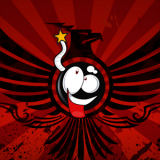
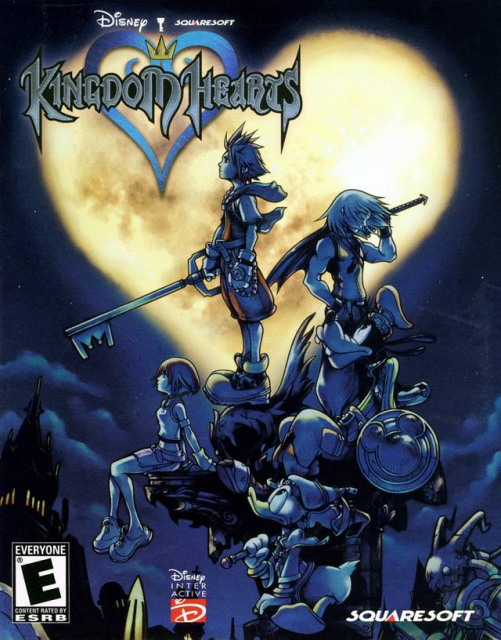

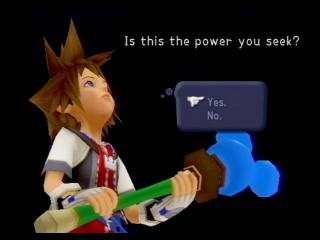
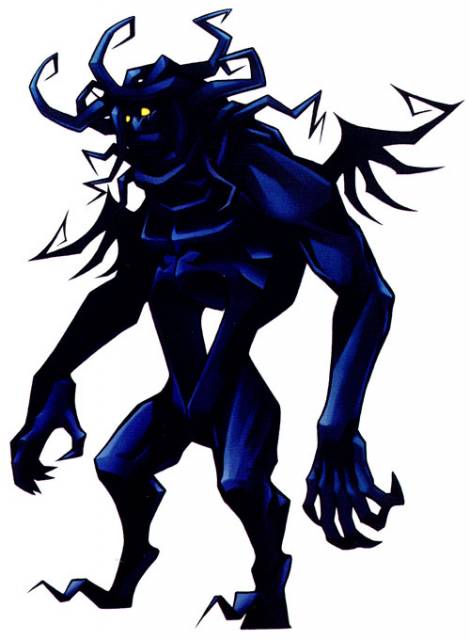
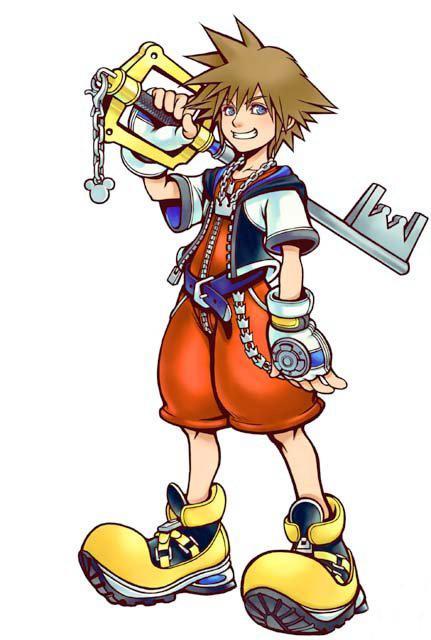
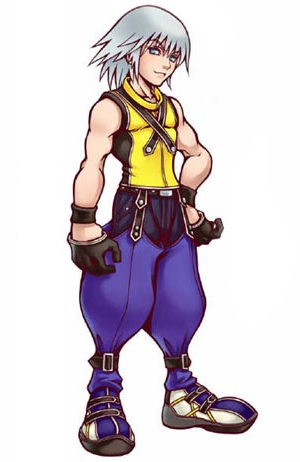
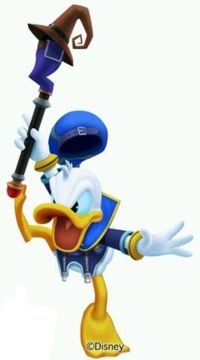
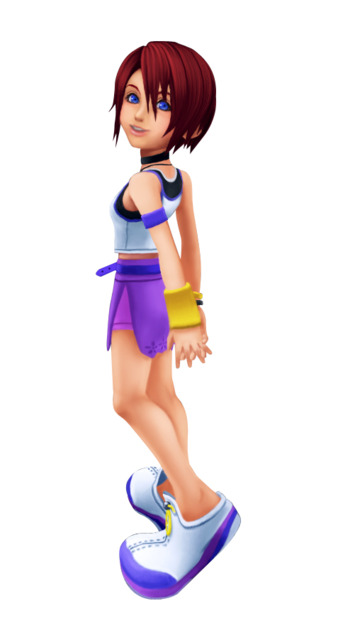
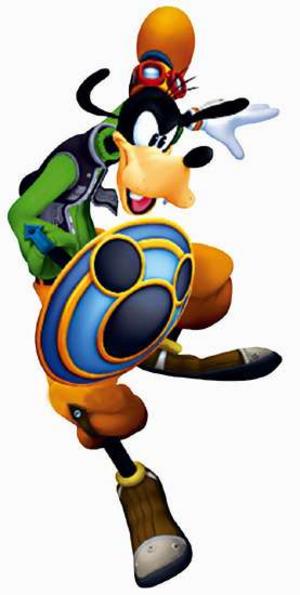
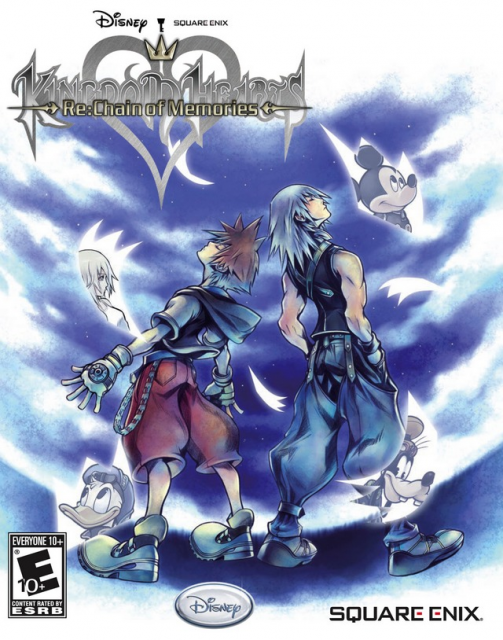
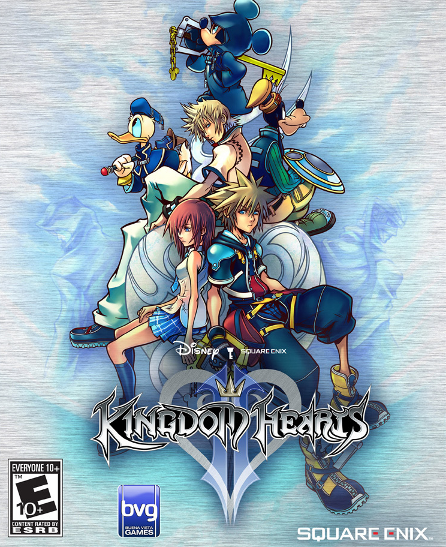
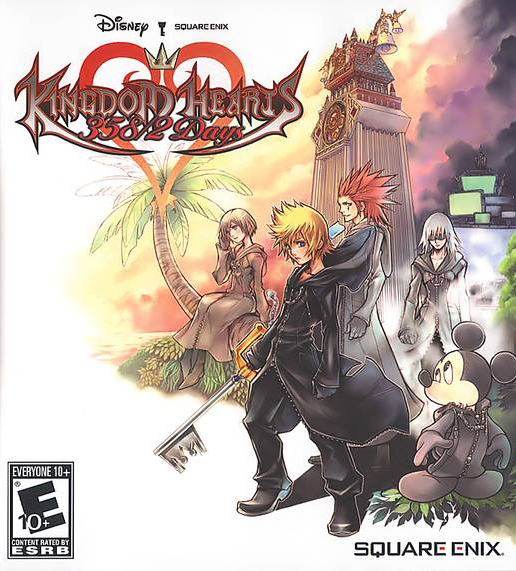
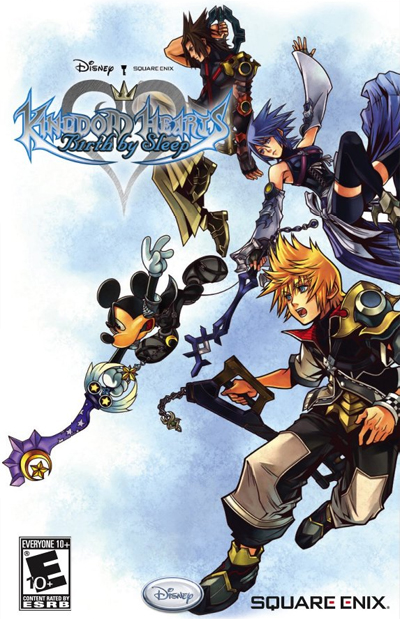
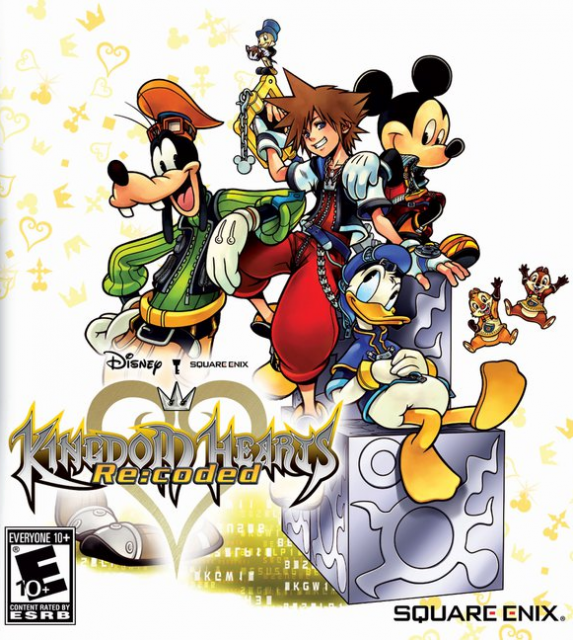
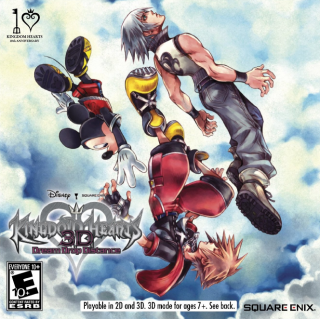
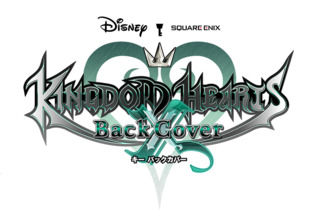
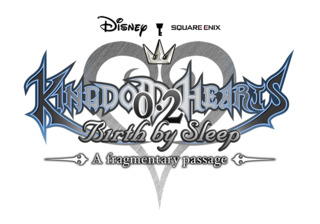
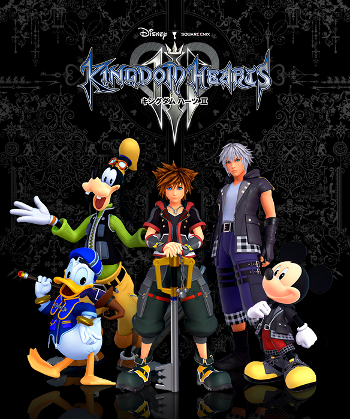
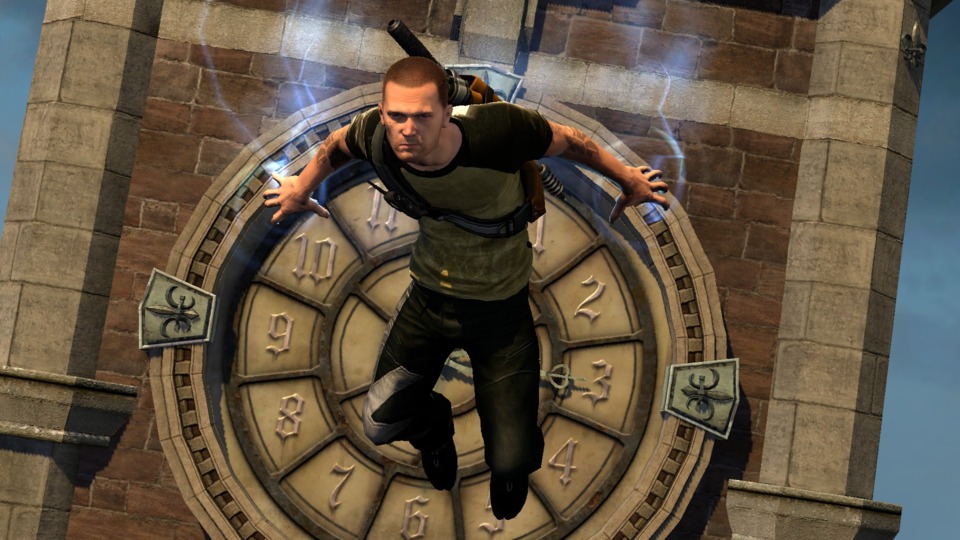
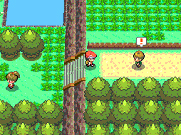
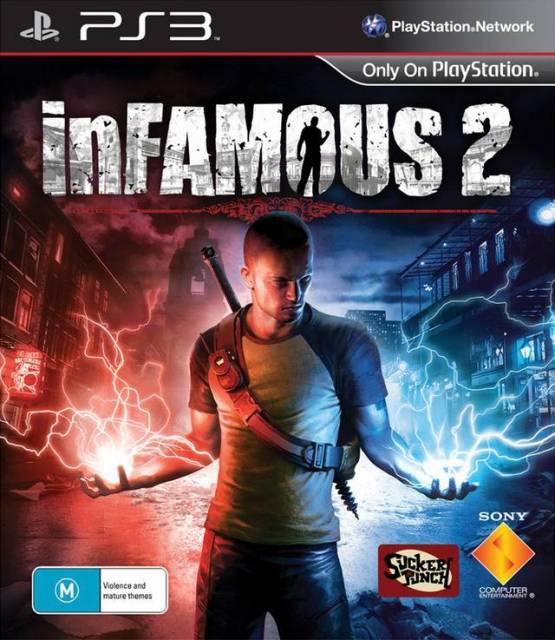
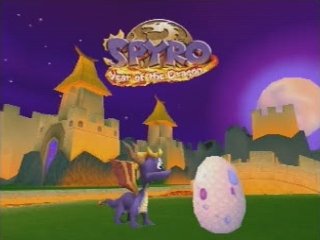
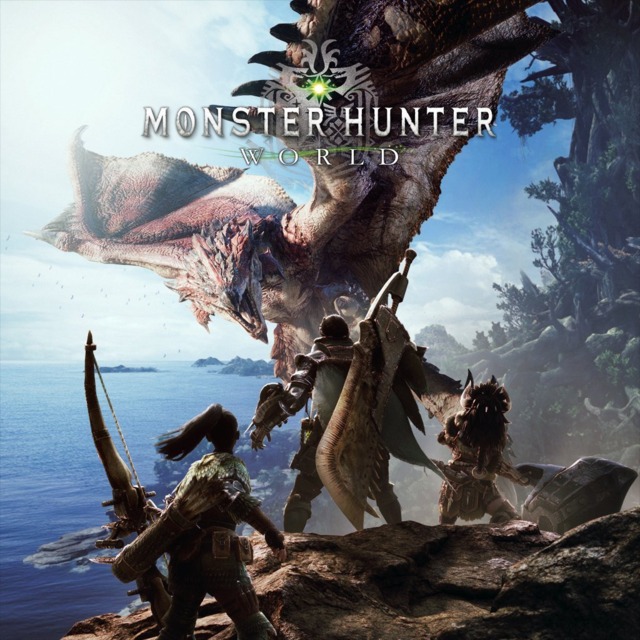
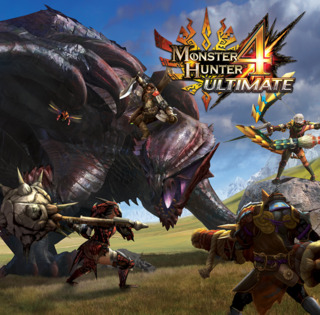
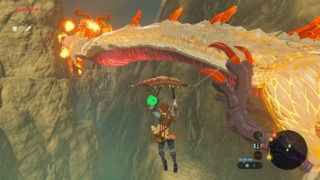
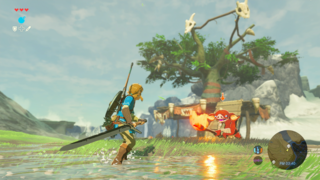
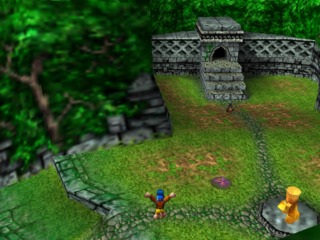

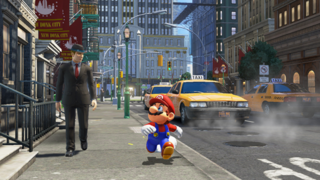
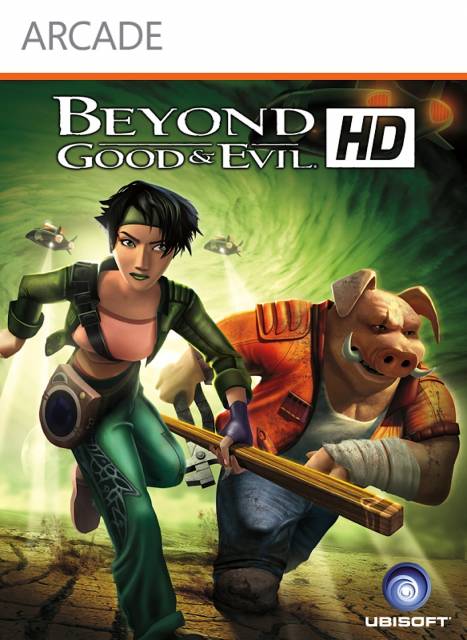
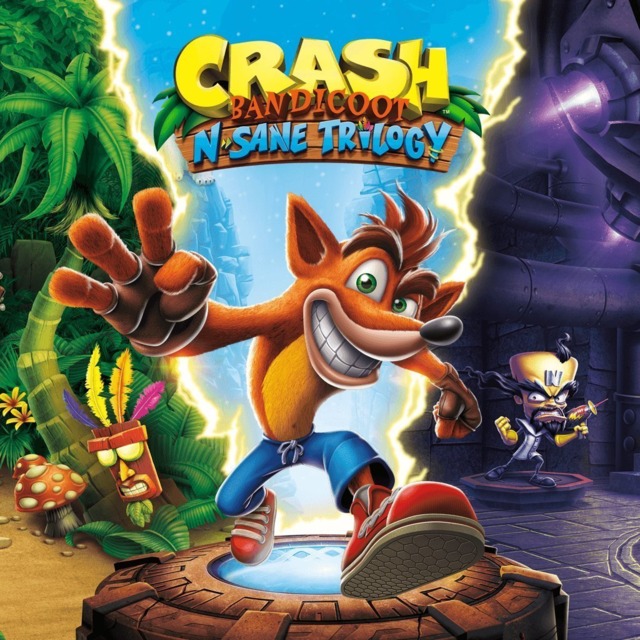
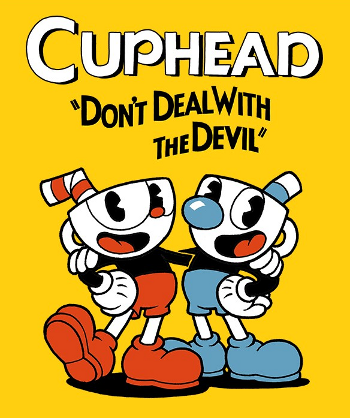
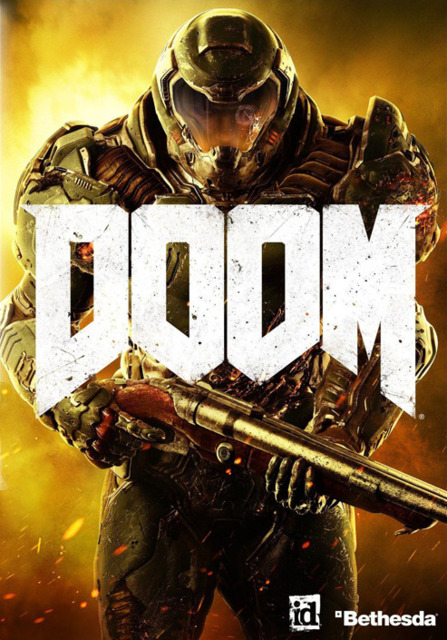

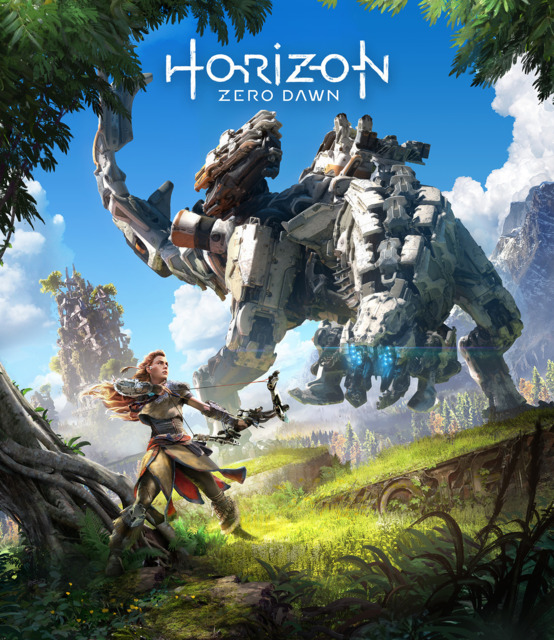
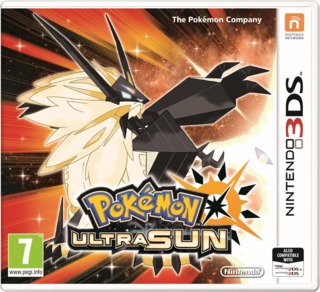
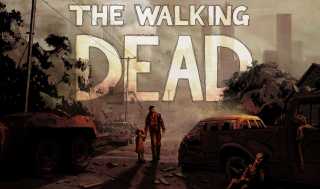
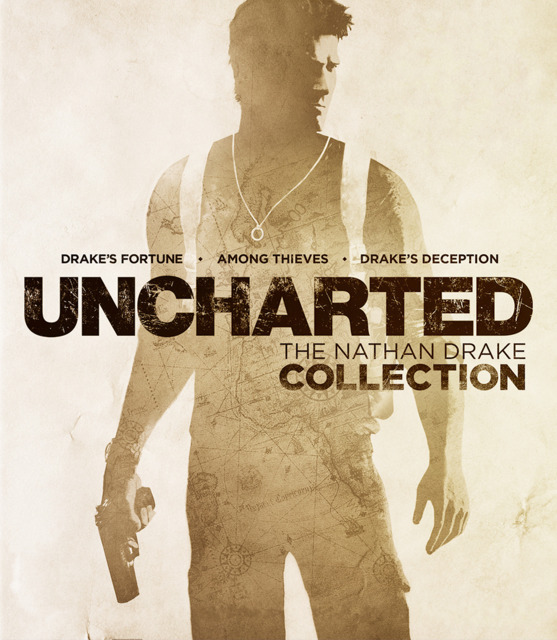
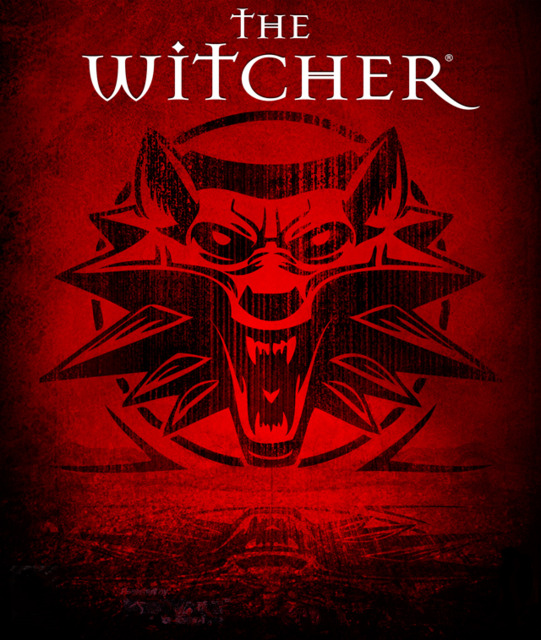
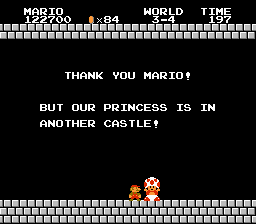
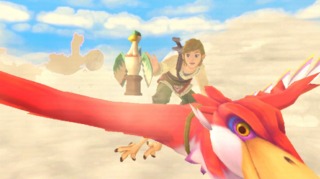
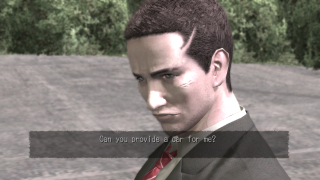
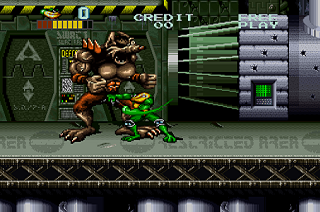
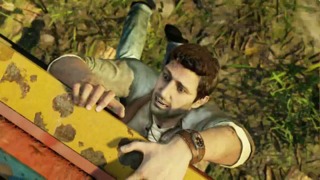
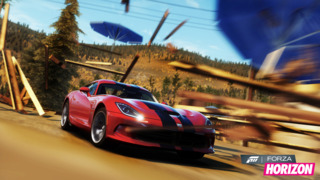
Log in to comment